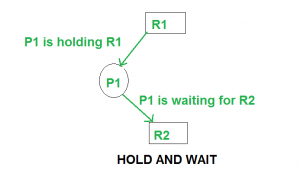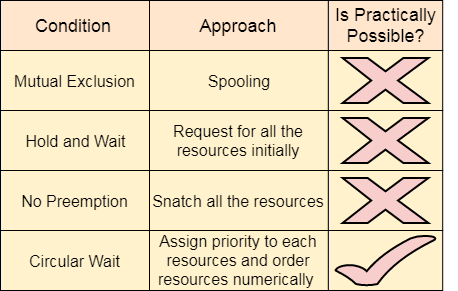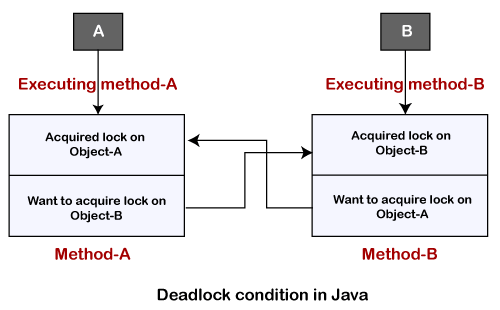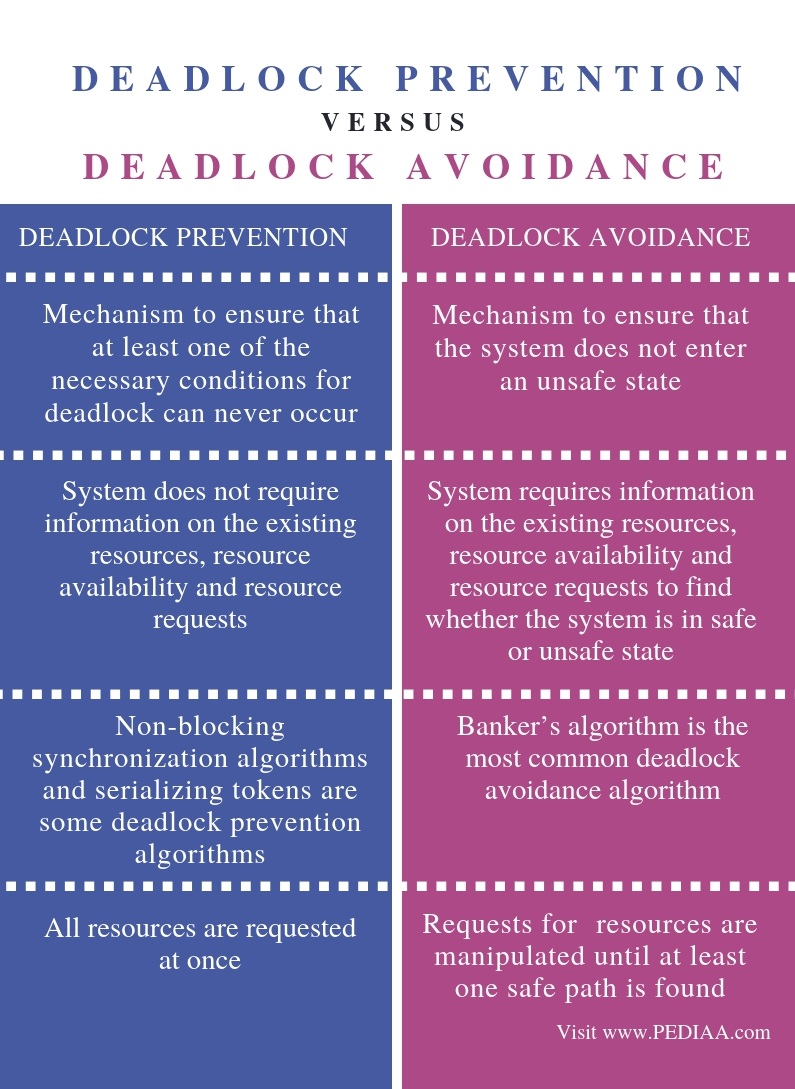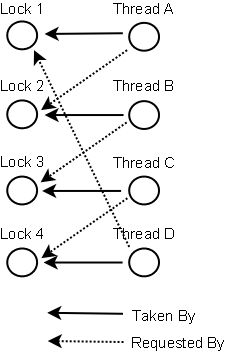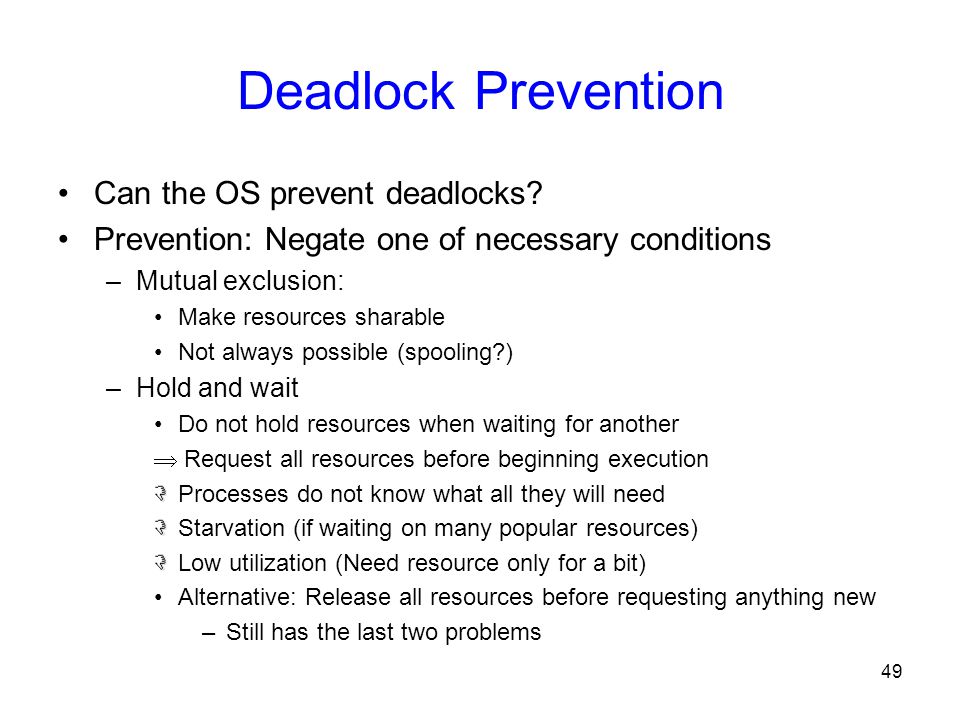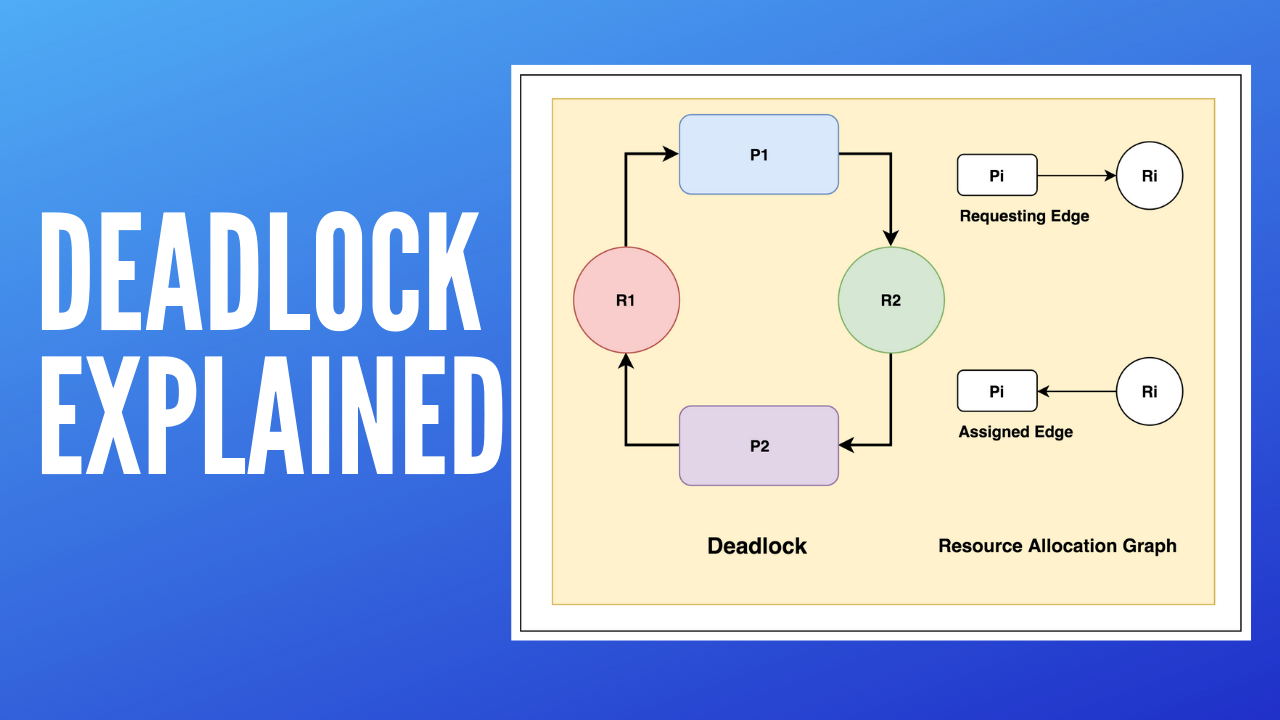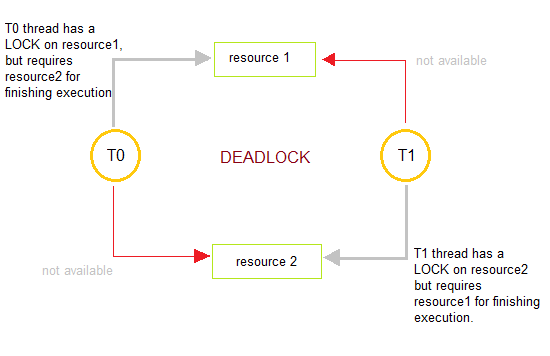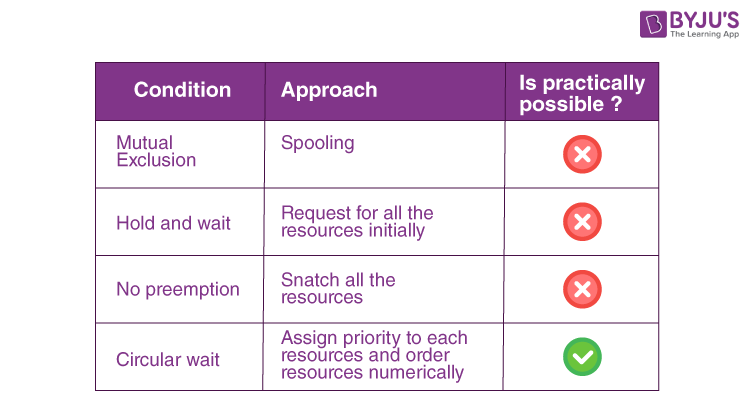Cool Tips About How To Prevent Deadlock

Deadlock prevention in the deadlock prevention process, the os will prevent the deadlock from occurring by avoiding any one of the four conditions that caused the deadlock.
How to prevent deadlock. Mutexes are used to prevent multiple threads from causing a data race by accessing shared resources at the same time. You can find the same advice in this technical article on microsoft.com regarding minimizing deadlocks. When you’re comparing changing tsql.
A deadlock occurs when 2 processes are competing for exclusive access to a resource but is unable to obtain exclusive access to it because the other process is. Since we must avoid allocating a lock to. Another way to avoid deadlock is to avoid giving a lock to multiple threads if we have already provided a lock to one thread.
There's a good reason it is listed first. Now, in an example such as our. Use the for update clause when performing a select operation.
Detecting a deadlock involves keeping track of both resource allocation and the requests that are currently pending from the processes. There are multiple techniques available to prevent deadlocks from reoccurring, including index tuning, forcing plans with query store,. To avoid deadlocks when applications read data that they intend to subsequently update:
Remove the following code from the example. Access objects in the same order. This kind of deadlock is avoided by establishing an order in which locks are acquired (a lock hierarchy ).
// a shared array of critical sections. Indexes are my favorite way to prevent deadlocks from coming back they’re my favorite because it tends to be relatively low risk to add an index. The best technique one can use in this.
